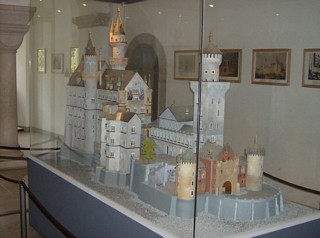
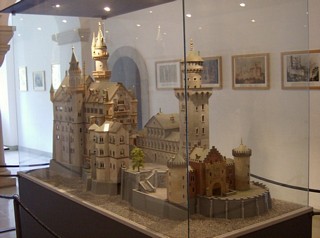
Steven Dutch, Natural and Applied Sciences, University of Wisconsin - Green Bay
First-time Visitors: Please visit
Neuschwanstein is the famous "fairy tale" castle of southern Germany, built by "mad" King Ludwig II, and the inspiration for Disney's Sleeping Beauty castle. If you've ever visited any real castles, it will be immediately obvious that Neuschwanstein was not built with defense in mind. It has way too many large windows close to the ground and has a wide open gap on one side. It was actually built between 1869 and 1886 - after the American Civil War, in fact. Ludwig, who had a penchant for building castles, built this one to celebrate the heroic ideals of Richard Wagner's music. It's a nineteenth century romantic's idea of what a castle should look like; in fact it was designed not by an architect but a theatrical set designer. And nutty as it is, it's a lot more benign celebration of Wagner's heroic mythology than the one later dreamed up a few decades later later by someone born about three years after work stopped on the castle.
Ludwig was popular with his subjects but not with his ministers, who were concerned about Ludwig's spending habits. He was finally declared mentally incompetent and deposed in 1886 and detained in a castle near Munich, to be found floating in the nearby lake shortly afterward under circumstances that remain mysterious to this day. Actually the castles were all built with family funds, severely draining the family's wealth, but not that of the kingdom.
Getting here is a challenge. You will not see a sign for Neuschwanstein anywhere until you are actually within sight of the castle. Since there are a number of castles built by Bavarian kings in the area, the signs merely point to "Koenigsschloesser" (King's Castles). Get to the town of Fussen and follow the signs.
Since you came all this way, you may as well take the guided tour, which is short (half an hour) because only a third of the interior was ever finished. The famous indoor cave turns out to be not much more than a walk-in closet. Also, the castle perpetuates the increasingly common insult to visitors of not permitting photography. All in all, it's somewhat over-rated although definitely worth a visit.
I recommend that visitors reserve most of their visit for outdoors. Walk the few hundred meters to the Marienbruecke (Marie's Bridge) for a nice view of the south side of the castle and then continue on up the mountain to get to the vantage points for the eastern end.
Below are two views of a large model of the castle.
Neuschwanstein is in the running to be listed on a new list of Seven Wonders of the World. Though worth a visit, it just isn't in the same league as the Eiffel Tower, Machu Picchu or the Alhambra, also finalists, or even other faux castles like Hearst San Simeon. Since it post-dates the American Civil War, it has a Disneyland-like lack of authenticity about it.
 |
 |
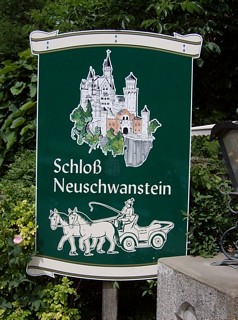 |
The village of Schwangau is the starting point for tours of both Neuschwanstein and the castle of Hohenschwangau. |
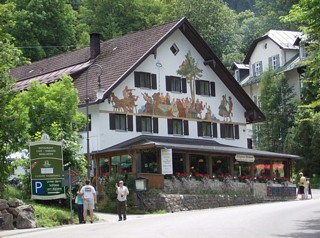 |
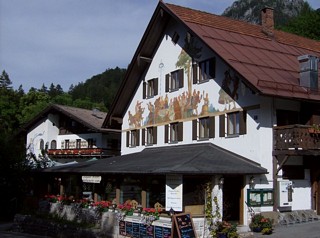 |
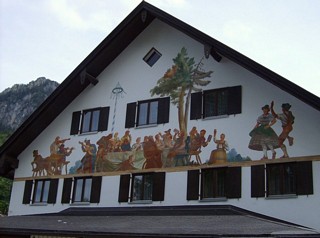 |
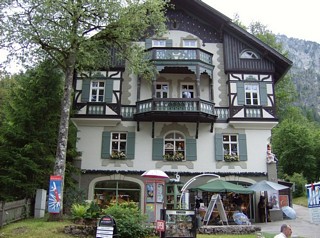 |
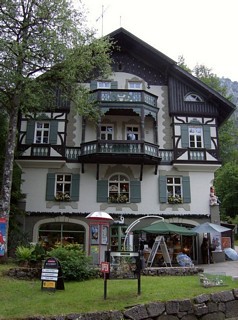 |
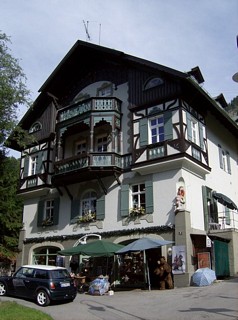 |
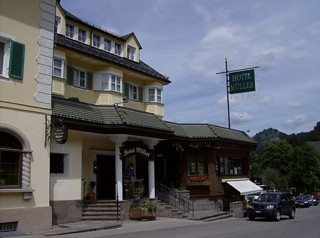 |
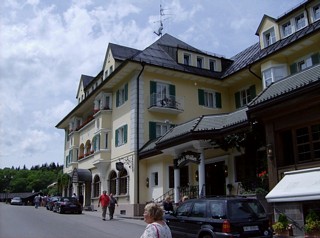 |
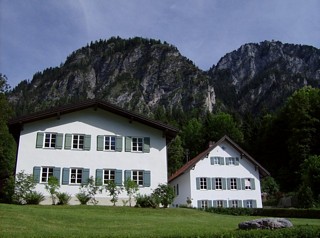 |
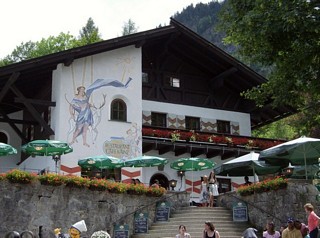 |
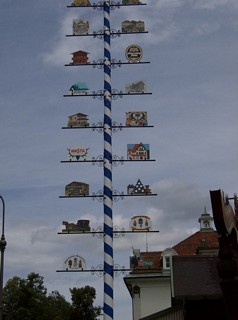 |
|
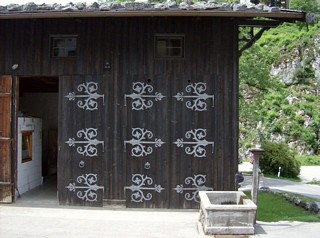 |
Left and below: ornate hinges on a barn. |
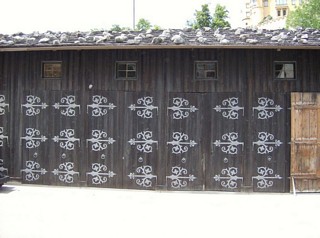 |
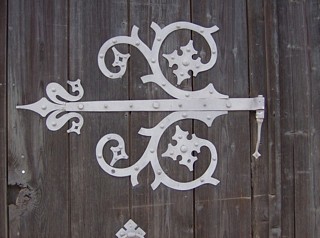 |
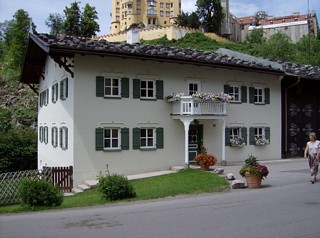 |
Left and below: Alpine cottages often had rocks on the roof to prevent the roof blowing off in severe winter storms, though in this case the rocks are purely for effect. |
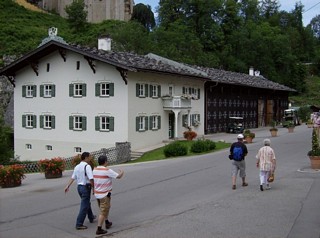 |
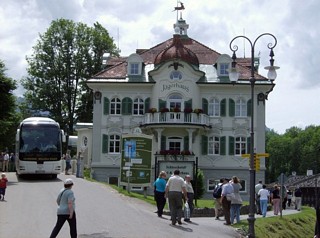 |
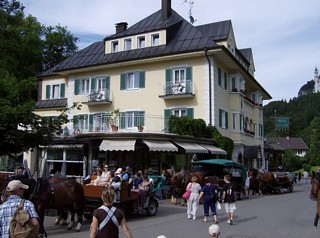 |
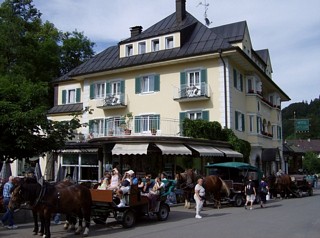 |
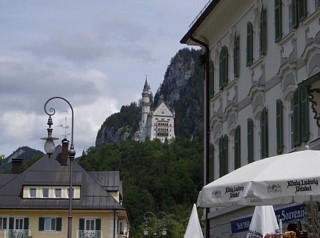 |
Left: view of the castle from Schwangau. |
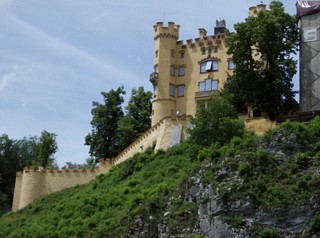 |
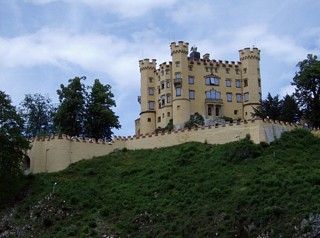 |
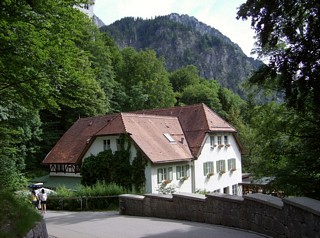 |
You can get to Neuschwanstein by walking, by bus, or by horse-drawn carriage. |
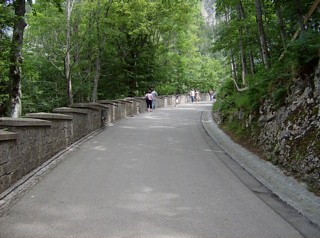 |
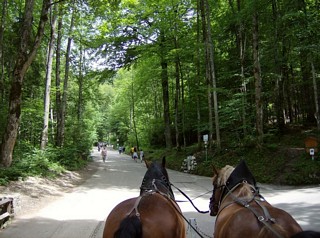 |
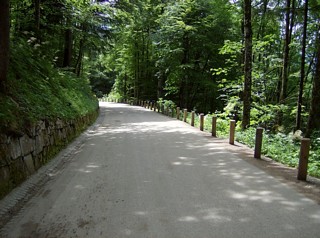 |
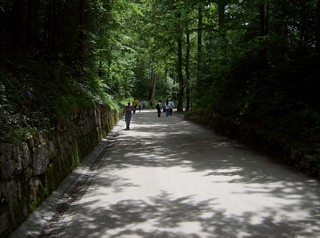 |
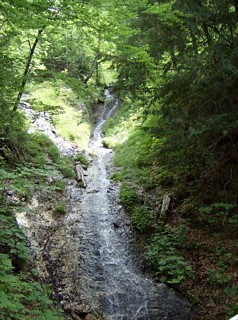 |
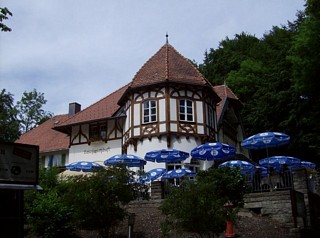 |
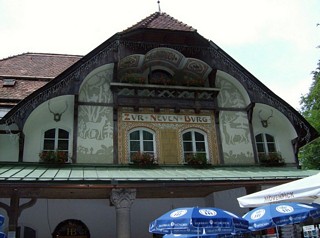 |
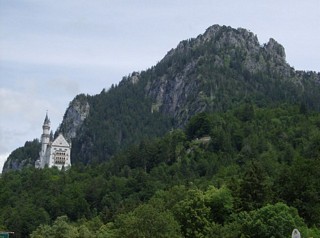 |
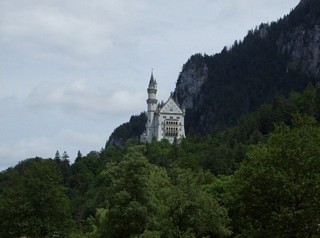 |
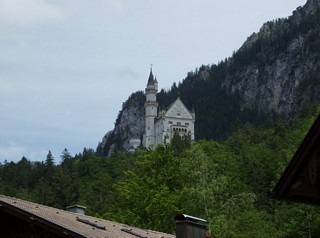 |
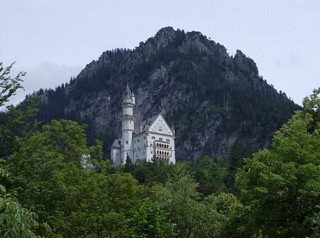 |
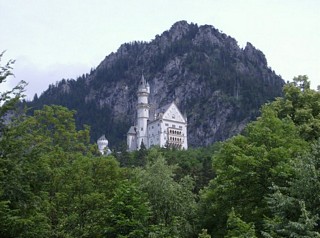 |
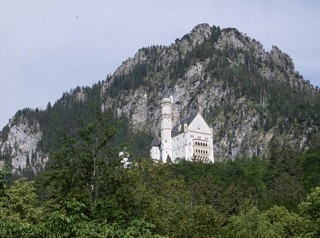 |
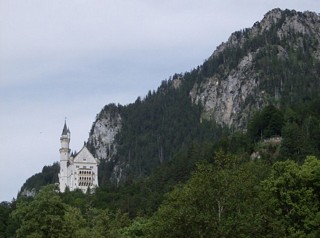 |
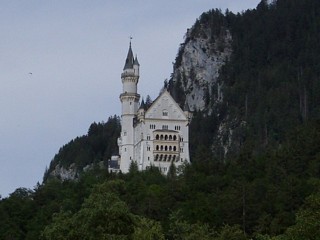 |
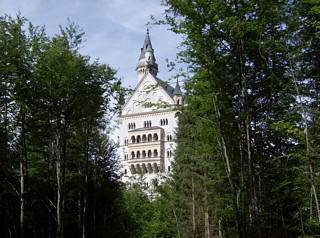 |
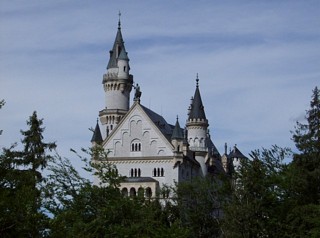 |
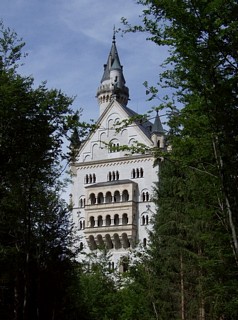 |
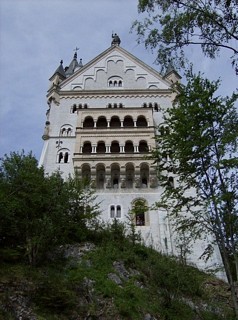 |
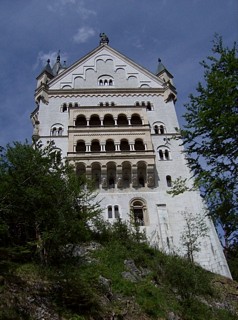 |
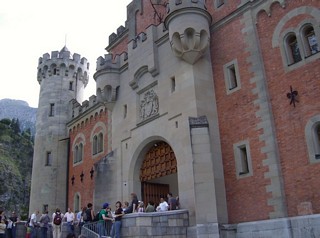 |
The main entrance at the eastern end is the only entrance for tourists. A plaza adjacent to the castle offers views of the castle from the east (below). |
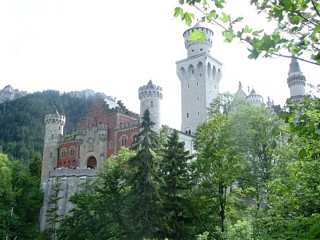 |
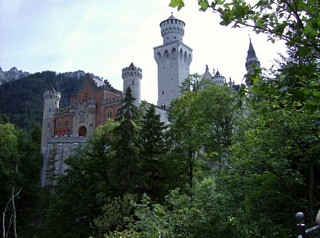 |
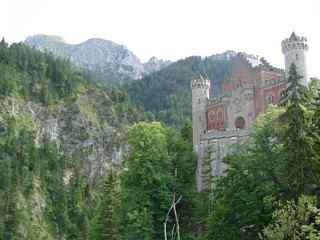 |
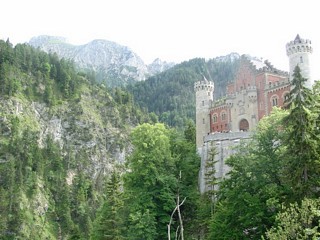 |
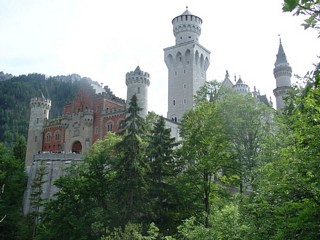 |
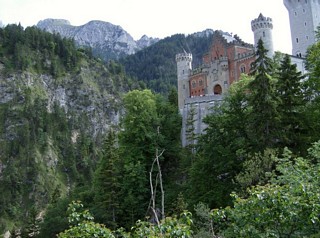 |
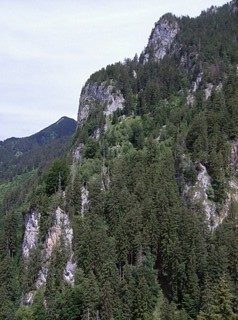 |
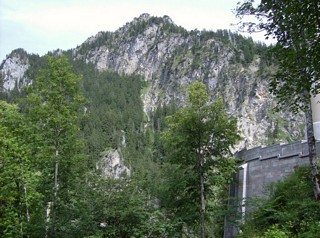 |
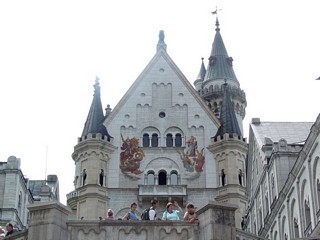 |
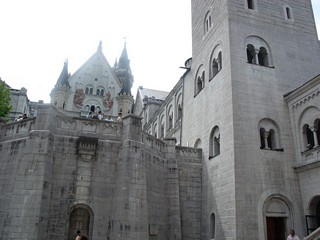 |
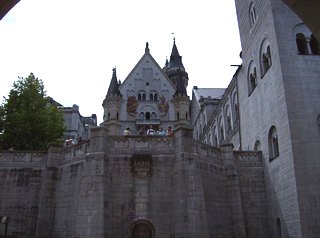 |
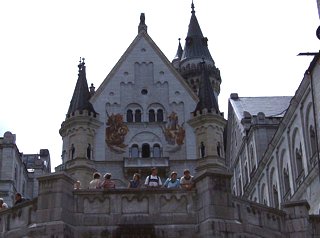 |
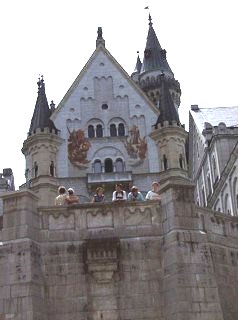 |
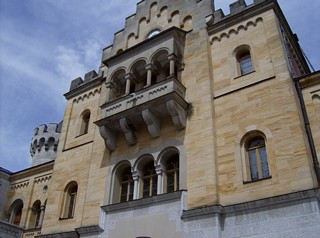 |
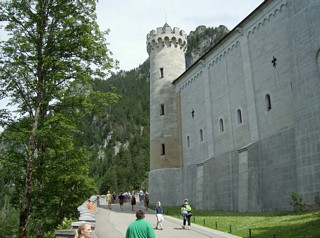 |
The south side of the castle is largely inaccessible. The easiest exterior views are of the north and west sides. |
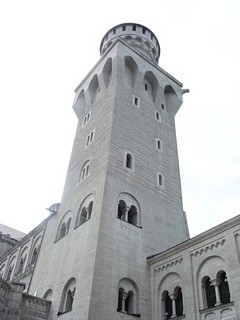 |
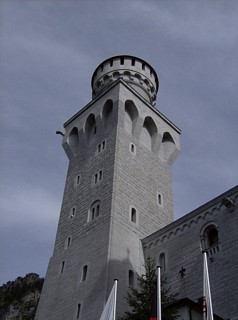 |
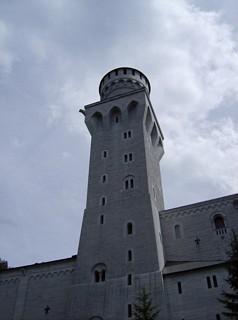 |
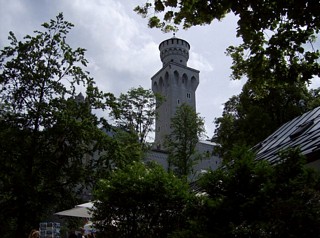 |
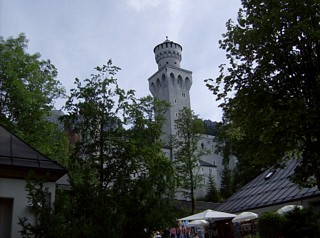 |
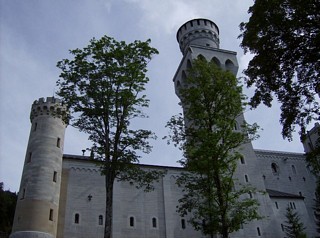 |
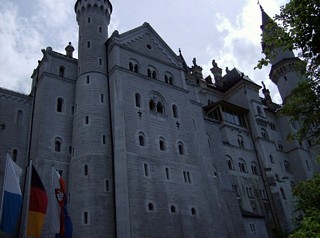 |
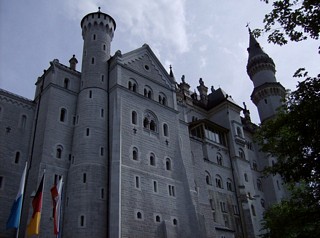 |
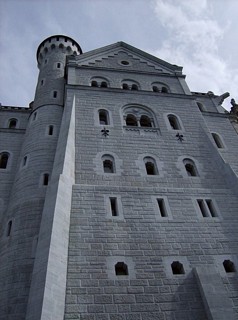 |
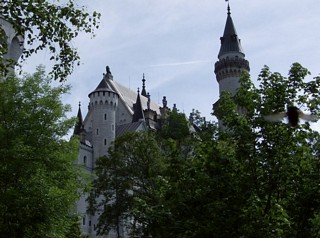 |
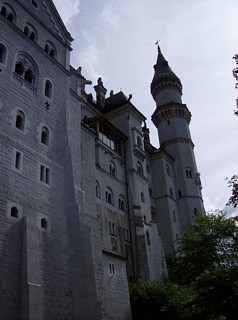 |
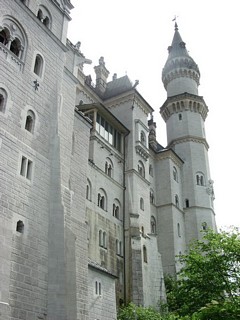 |
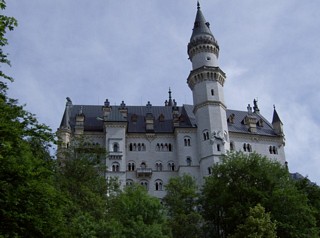 |
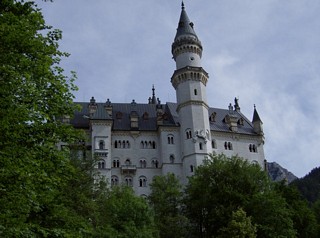 |
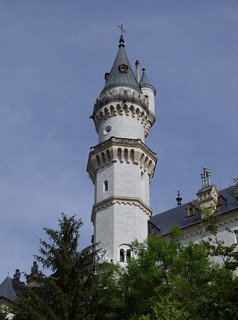 |
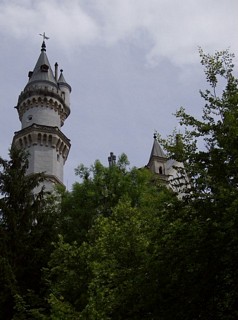 |
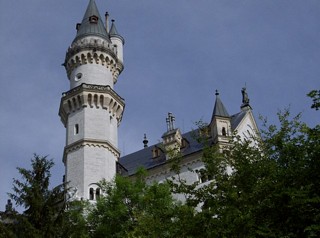 |
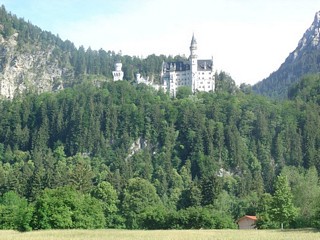 |
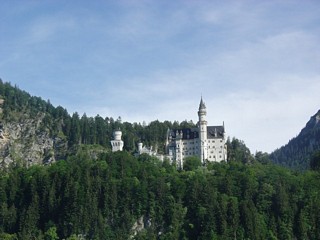 |
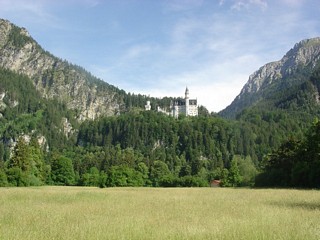 |
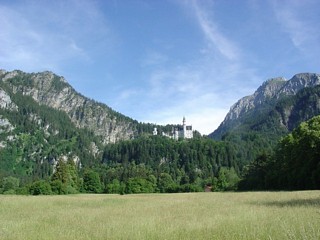 |
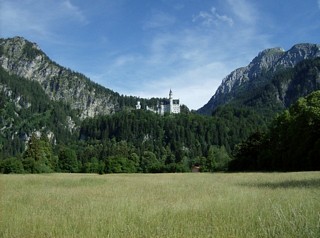 |
Below: views of the surrounding mountains. |
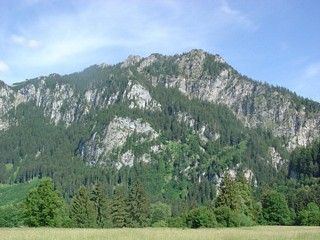 |
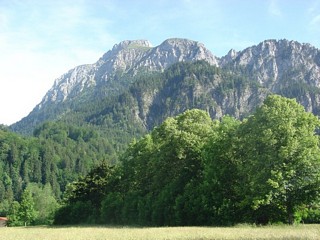 |
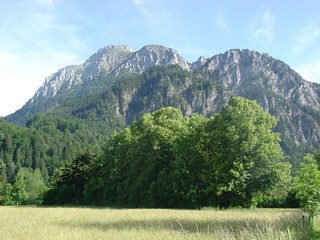 |
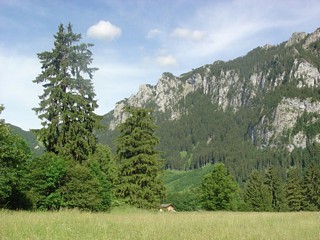 |
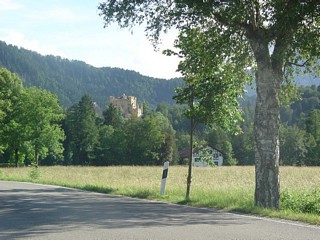 |
Left: distant view of Hohenschwangau. |
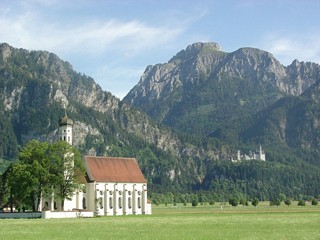 |
Left: Bavarian church with Neuschwanstein in the distance. |
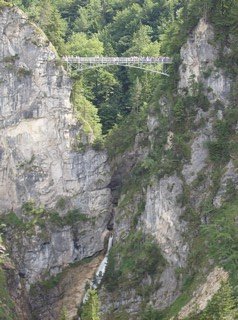 |
Not named for the Virgin Mary but for Marie of Prussia, Ludwig's mother. At left and below are views of the bridge from the castle. The bridge spans the Pollat gorge, a popular sightseeing spot even before the castle was built. |
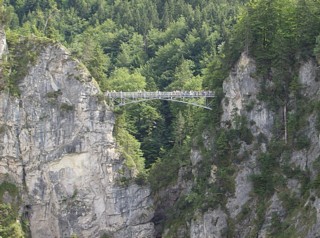 |
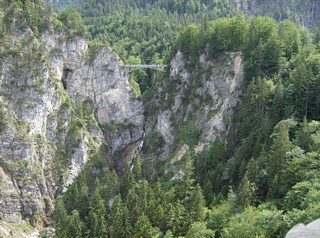 |
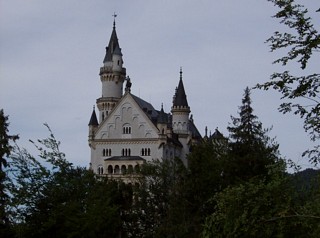 |
West end of the castle from the path to Marienbruecke. |
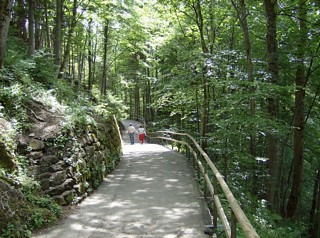 |
View along the path. |
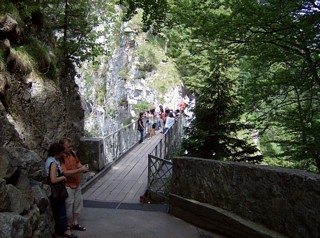 |
The bridge, featuring attractions for the acrophobic like a really deep gorge, centimeter-width gaps between the planks offering nice views straight down, and planks that flex under your weight. |
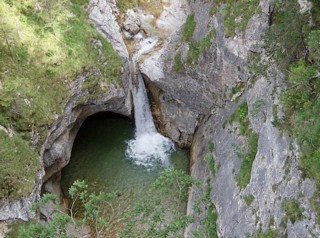 |
Left and below: looking down from the bridge to a small waterfall and potholes. |
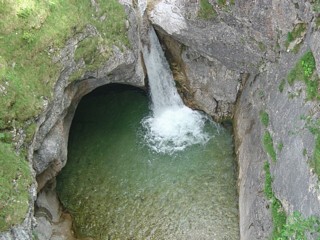 |
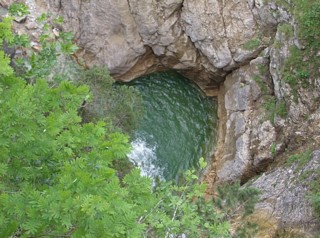 |
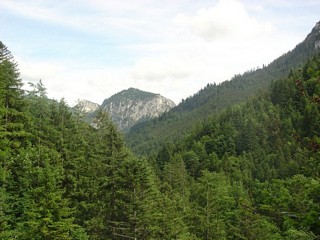 |
Left: looking upstream (south) from the Marienbruecke. |
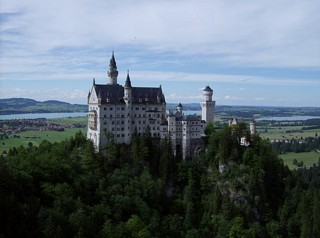 |
Left and below: the bridge offers the only eye-level vantage point to view the entire castle. |
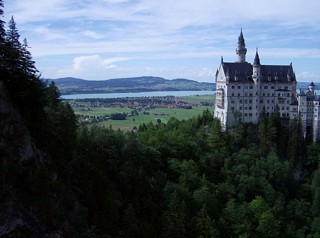 |
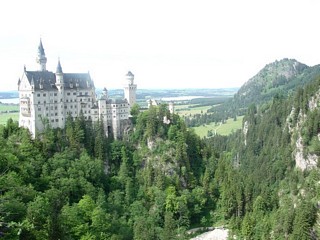 |
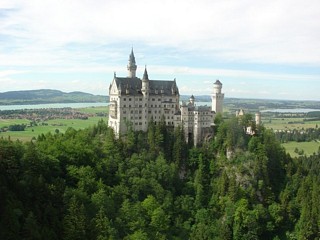 |
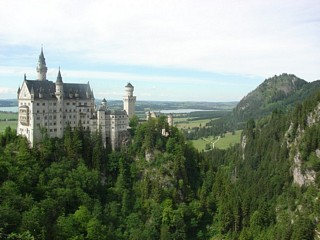 |
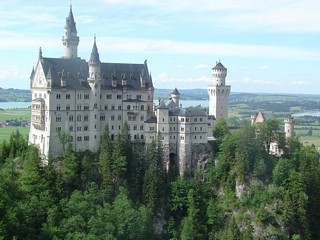 |
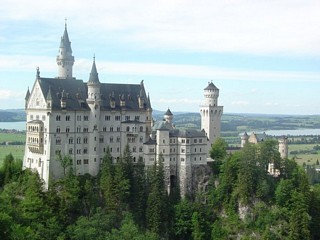 |
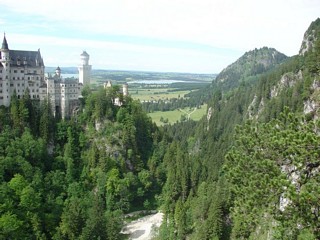 |
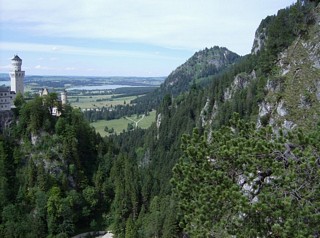 |
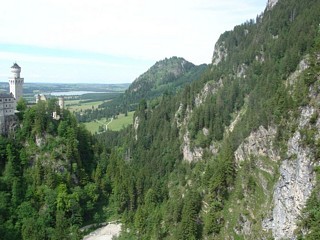 |
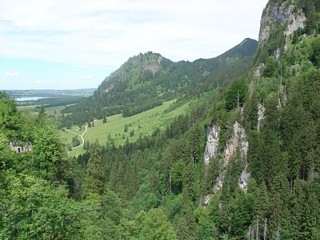 |
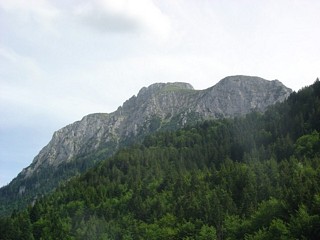 |
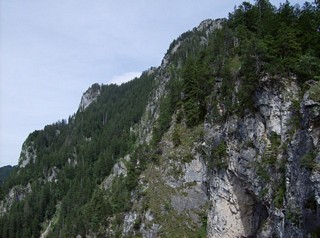 |
The views look west toward the Alpensee and then swing through north to northeast.
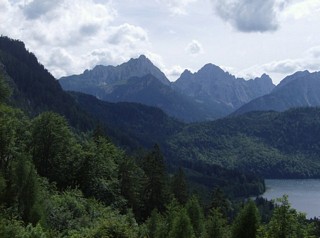 |
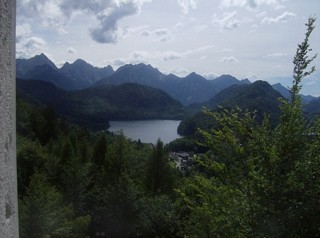 |
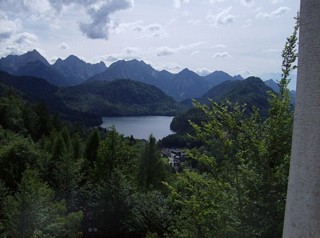 |
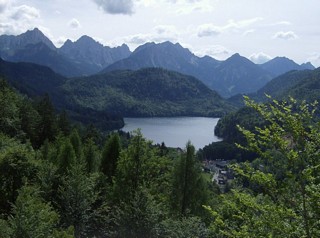 |
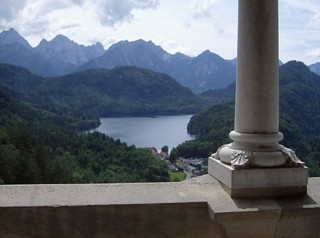 |
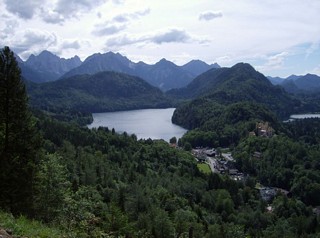 |
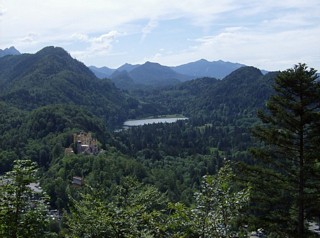 |
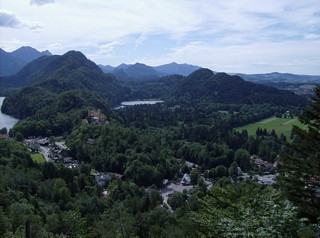 |
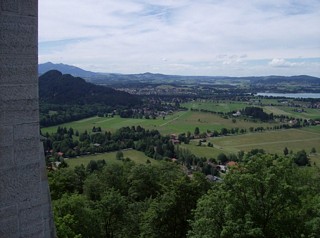 |
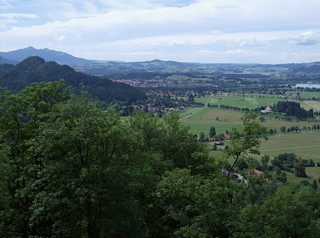 |
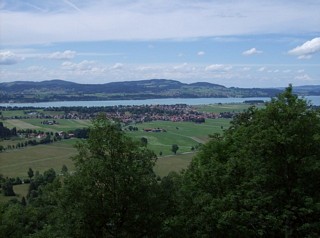 |
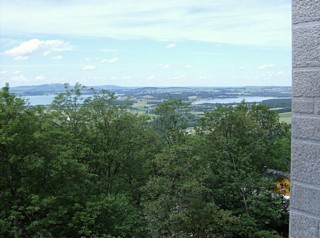 |
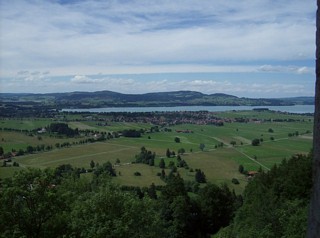 |
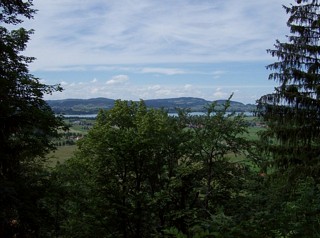 |
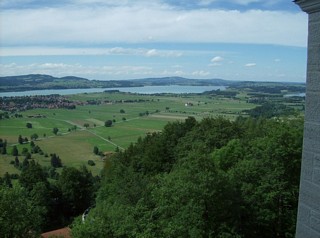 |
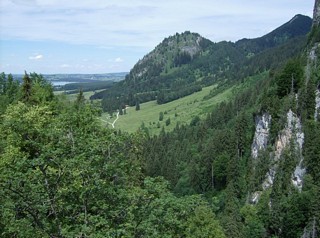 |
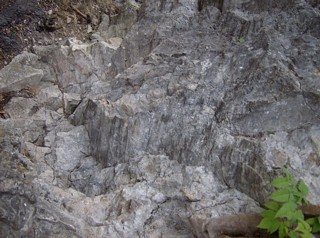 |
All the rocks in the area are deformed limestone with abundant slickensides. The exposure at bottom right has slickenside steps indicating left-lateral motion. |
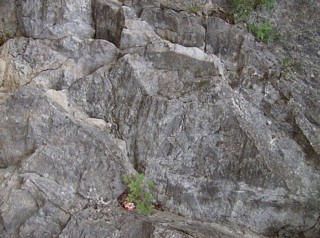 |
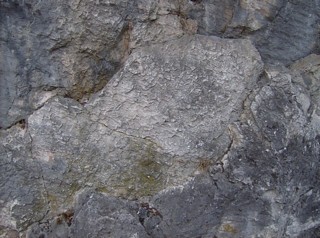 |
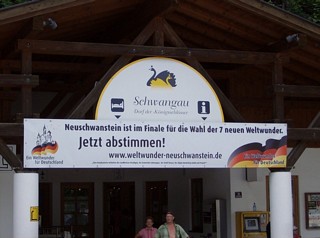 |
Neuschwanstein is in the finals for the election of the Seven New Wonders of the World.
Vote now! |
Return to Virtual FieldTrips Index
Return to Historic Sites Index
Return to Professor Dutch's Home Page
Created 22 June 2007, Last Update 02 July 2012
Not an official UW Green Bay site